VCSELs and How to Keep Them Cool--Laird Thermal Solutions‘ smaller and cost-effective OptoTEC™ MBX Series
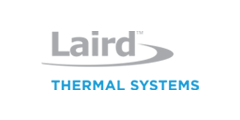



Vertical-cavity surface-emitting lasers (VCSELs) are a type of semiconductor laser that emits a circular, low-divergence beam of light perpendicular to the surface of the chip, as opposed to edge-emitting lasers that emit parallel to the chip surface. This beam quality simplifies optical system design and improves coupling efficiency. VCSELs are characterized by their unique structure, which consists of a thin layer of active semiconductor material sandwiched between two highly reflective mirrors. VCSELs offer several advantages over traditional edge-emitting lasers, including low-power consumption, high-speed operation, wide wavelength range, ease of integration, and lower cost. Traditionally VSCELs are resilient to temperature changes and are highly stable. However, the emergence of high-powered VSCELs is driving the need for temperature stabilization in some applications.
VCSEL Background
VCSELs found widespread adoption in the late 1990s and early 2000s. VCSELs’ high modulation bandwidth allows for high-speed data rates, which makes them well-suited for applications such as optical communication systems and high-speed interconnects. VCSEL technology has continued to evolve and are now also used in biomedical imaging, 3D sensing, laser printing and other industrial applications.
Historically, VCSEL applications have utilized GaAs wafers, however new applications including augmented reality, virtual reality, biosensing, datacom and LIDAR, have established a market for high-powered VSCELs that use InPh wafers. InPh wafers offer many benefits for high-power VCSEL applications including higher frequency operations, wider bandgap, lower noise and higher thermal resistance and better conductivity.
According to Prescient & Strategic Intelligence, the global market for VCSELs was US$1.5 billion in 2021, and is projected to reach US$6.96 billion by 2030. This growth is primarily attributed to the adoption of 3D sensing features in smartphones and autonomous vehicles (LiDAR and ADAS).
VCSEL Cooling Challenges
As noted previously, traditional GaAS VSCELs are very stable in temperature change environments. They work from 600 to 1200 nm. High-powered InPh VCSELs operate at a higher wavelength spectrum of 1200 to 1800 nm and cover further distances. In consumer applications, using a higher wavelength spectrum reduces susceptibility to sunlight, is eye safe at 10X the power and has lower absorption through OLED displays.
High-power VCSELs generate more optical power, resulting in higher power densities within the device. This increased power density leads to a greater amount of heat generation per unit volume, making the device more susceptible to thermal issues. Changes in temperature can shift the laser wavelength and reduce output power affecting performance and lifespan. Excessive heat can lead to accelerated aging and reduced reliability of VCSELs. Ensuring proper cooling through effective thermal management is essential for maintaining consistent performance and extending the operating life of these devices.
When the temperature fluctuates, VCSELs can also exhibit mode hopping behavior (the abrupt transition of the laser output from one mode to another). This can be problematic in applications requiring stable and continuous laser emission. As InPh VCSELs are scaled up in power output, the cooling requirements become more challenging.
It is important to note that the majority of InPh VSCEL applications do not require external cooling technologies. High-power, ultra-high performance, InP-based applications require advanced temperature stabilization solutions for precise temperature control to manage the increased heat load.
VCSEL Cooling Solutions
The cooling solution of choice depends on the specific requirements of the application such as power requirements, size constraints, and thermal management goals. In addition, VCSELs have a thermal resistance that determines how effectively heat can be conducted away from the device. High thermal resistance can limit the power output and efficiency of the VCSEL, therefore thermal design considerations are essential to minimize thermal resistance and enhance overall performance.
VCSEL laser diode packages demand advanced cooling, requiring micro TECs with enhanced heat pumping capacity. Recent innovations in thermoelectric materials and manufacturing processes have enabled slimmer TEC profiles. This innovation allows the production of smaller form factor laser diodes without compromising thermal stability. Laird Thermal Solutions' smaller and cost-effective OptoTEC™ MBX series, meets modern VCSEL requirements, offering reduced size, lower power consumption, heightened reliability, and cost-efficient production. These features enhance laser diode performance, promoting innovation in next-gen telecom applications.
_(with-call-outs).png)
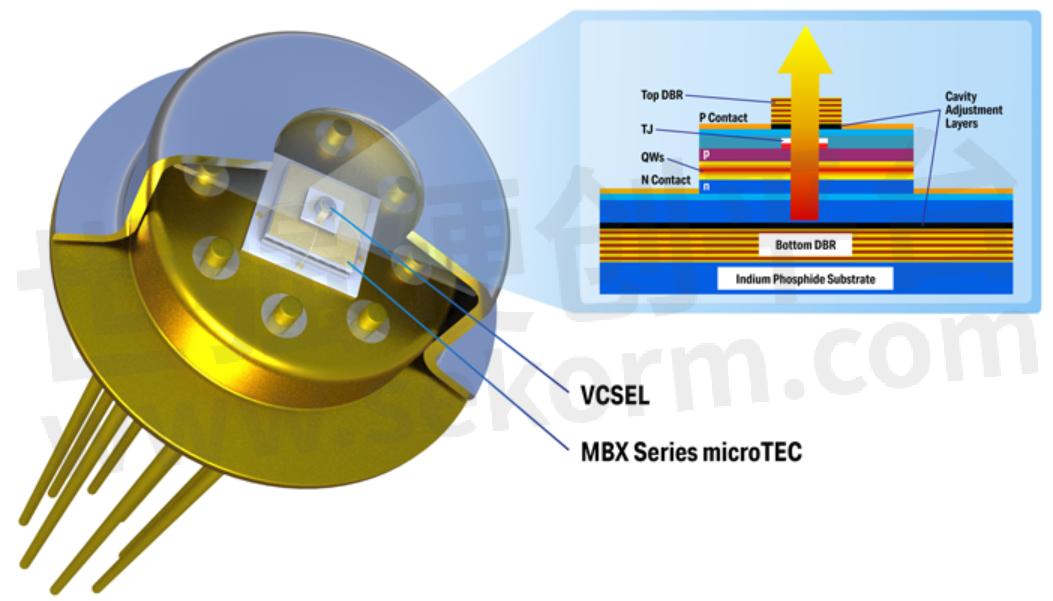
TO-Can with integrated VCSEL and micro-TEC for cost-effective, reliable cooling
Applications
The goal of the thermal management solution is to keep VCSELs within their specified operating temperature range to achieve reliable laser emission, proper wavelength control, and optimum performance. Applications like those mentioned below require precise temperature control often under tight space constraints making ultra-small TECs an ideal cooling candidate.
Data Communications: VCSELs are commonly used in high-speed data communication applications, such as optical transceivers for data centers and fiber-optic networks. In these applications, precise temperature control is essential to maintain the laser's output wavelength stability, which is critical for reliable data transmission at high data rates.
3D Sensing and LiDAR: VCSELs are utilized in 3D sensing technologies like facial and gesture recognition. They are also used in LiDAR (Light Detection and Ranging) systems for autonomous vehicles. To achieve accurate depth sensing and distance measurements, VCSELs must emit light at a consistent wavelength and power. Active cooling and temperature regulation are necessary to minimize wavelength drift and ensure reliable operation in varying environmental conditions.
Biomedical Imaging: VCSELs are used in medical devices for applications such as optical coherence tomography (OCT) and fluorescence imaging. Precise temperature control is vital to maintain wavelength stability and optimize the quality of imaging results.
Printing and Imaging: VCSELs are used in high-quality laser printing and imaging applications. Active cooling and thermal control are necessary to maintain consistent print quality, prevent color shifts, and ensure long-term reliability in demanding printing environments.
Sensors and Metrology: VCSELs are utilized in various sensing and metrology applications, including environmental monitoring, industrial automation, and precision measurement devices. Maintaining the stability of VCSELs ensures accurate and repeatable measurements over time.
Consumer Electronics: VCSELs are being increasingly integrated into consumer electronics, such as smartphones for facial recognition and depth sensing. Because smartphones are subjected to varying ambient temperatures, active thermal management is required to maintain the performance and reliability of the VCSEL-based sensors.
Industrial Laser Systems: VCSELs are being used in industrial laser systems for material processing, cutting, and marking. In these applications, active thermal management is crucial to maintain laser power and beam quality, ensuring consistent results in the manufacturing process.
Quantum Technologies: In emerging quantum technologies like quantum computing and quantum communication, VCSELs play a role in generating and manipulating quantum states of light. Active thermal management helps stabilize the VCSELs' performance, contributing to the reliability of quantum systems.
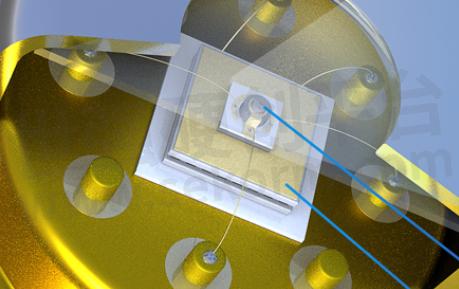
- |
- +1 赞 0
- 收藏
- 评论 0
本文由samsara转载自Laird Thermal Systems Official Website,原文标题为:VCSELs and How to Keep Them Cool,本站所有转载文章系出于传递更多信息之目的,且明确注明来源,不希望被转载的媒体或个人可与我们联系,我们将立即进行删除处理。
相关推荐
Laird Thermal Systems OptoTEC™ MBX,用于下一代光模块的微型热电制冷器
本文讨论了半导体激光器在通讯应用中的重要性,以及Laird Thermal Systems OptoTEC™ MBX系列微型热电制冷器(TEC)如何帮助散热以优化性能。介绍了激光器的类型、封装、性能挑战和制冷方法,强调了微型TEC在提高激光器性能和可靠性中的作用。
High-performance Thermoelectric Coolers Offer A Flexible Active Cooling Option for Spot Cooling of Lidar Sensors
The lasers in Lidar systems, particularly those used in outdoor autonomous applications, require active cooling to achieve maximum resolution in high-temperature environments. As temperatures increase, the wavelength of the laser changes, resulting in increased range error. Maintaining operational temperatures within a Lidar system’s temperature limits ensures peak performance. Laird Thermal Systems High-performance thermoelectric coolers offer a flexible active cooling option for spot cooling of Lidar sensors.
Laird Thermal Systems Offers Ultra-Compact Coolers for Next-Generation Optical Transceivers
In this application note, we will discuss laser diodes commonly used in telecom applications, and how ultra-small thermoelectric coolers (TECs) can remove the heat generated in the laser diode package to optimize overall performance.
莱尔德热系统将在2024 CIOE中国光博会上展出下一代主动制冷技术
莱尔德热系统(Laird Thermal Systems)将于9月11日至13日在深圳国际会展中心参加2024年中国国际光电博览会(简称:CIOE中国光博会),展位位于12号馆信息通信展的12A69。
【材料】莱尔德热系统宣布推出用于下一代光电设备的全新微型热电制冷器产品线OptoTEC™ MBX系列
2024年11月12日,莱尔德热系统(Laird Thermal Systems)宣布扩展微型热电制冷器产品线,并推出OptoTEC™ MBX系列,该系列适用于空间受限的高性能光电应用。MBX系列采用了下一代热电材料和先进的自动化工艺,可为TO-Can、TOSA和Butterfly封装等应用中使用的TEC提供标准和客制化选项。
【经验】用于下一代光模块的微型热电制冷器(下篇)
数据通信和通讯行业的光纤技术应用中,温度稳定性能够提高光纤系统中至关重要的关键光电元件性能和寿命。本文中Laird Thermal Systems为您介绍微型热电制冷器(TEC)如何为半导体激光器散热以便优化系统的整体性能。
Laird Thermal SystemsLaunches the OptoTEC™ MBX Series, a New Line of Micro Thermoelectric Coolers for High-performance Space-constrained Optoelectronic Applications
Laird Thermal Systems launches the OptoTEC™ MBX Series, a new line of micro thermoelectric coolers for high-performance space-constrained optoelectronic applications. The latest design innovation includes a compact footprint, with the smallest model measuring just 1.5 x 1.1 mm and profiles as thin as 0.65 mm.
Laird Thermal Systems Unveils Micro Multistage Thermoelectric Cooler & Optical TEAs Integration Capability
“Advanced process automation has enabled a new level of miniaturization for our MSX multistage series to support next-generation imaging solutions that require smaller optical packages,” said Andrew Dereka, Thermoelectrics Product Director at Laird Thermal Systems.
Multistage Micro Thermoelectric Coolers for Miniature Optical Image Sensing Applications
Micro multistage thermoelectric coolers offer multiple advantages for advanced image sensing applications. Micro thermoelectric coolers provide precise, localized thermal control in microscale environments, rapid cooling to very low temperatures, high thermal efficiency, solid-state operation, low power consumption, and can be customized to easily scale up or down depending on the specific application requirements.
Laird Thermal Systems Thermoelectric Coolers OptoTEC™, MBXOptoTEC™, OTXOptoTEC™ HTX for Optical Transceivers
This paper mainly introduces the application cases of several different series of thermoelectric coolers from Laird Thermal Systems for the optical module market
Laird Thermal Systems to Showcase Next Generation Active Cooling Technologies at CIOE 2024 - China International Optoelectronic Exhibition
Laird Thermal Systems will be exhibiting its newest active thermal products that solve thermal problems in applications including optical transceivers, imaging sensors, lasers and autonomous systems at the 2024 China International Optoelectronic Exhibition from September 11th through the 13th.
Laird Develops Micro Thermoelectric Cooler with Heat Pumping Densities up to 27W/cm² for Next Generation of Optoelectronic Packages
The OptoTEC™ MBX Series offers micro footprints as small as 1.6x1.6mm with thicknesses down to 0.9mm. The packing fraction for thermoelectric materials enables high heat pumping densities of up to 27W/cm² at lower operating currents than traditional thermoelectric coolers.
ROHM开发出集VCSEL和LED特点于一体的红外光源VCSELED作为温度依赖性低、广角发射且光线均匀的光源
ROHM确立一项通过激光用树脂光扩散材料将垂直腔面发射激光器VCSEL元件密封的新型红外光源技术“VCSELED™”,有望成为有助于提高汽车驾驶员监控系统和座舱监控系统性能的光源。
电子商城
服务
使用FloTHERM和Smart CFD软件,提供前期热仿真模拟、结构设计调整建议、中期样品测试和后期生产供应的一站式服务,热仿真技术团队专业指导。
实验室地址: 深圳 提交需求>










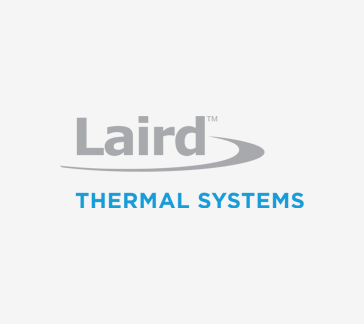
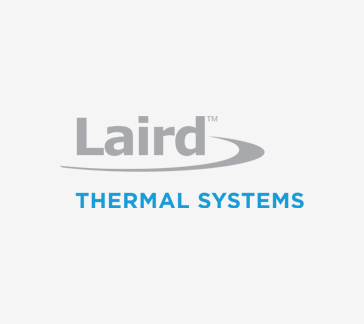

























































































































































































登录 | 立即注册
提交评论